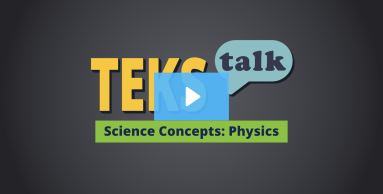
Knowledge and Skills Statement
The further explanation is designed to be a resource for educators that helps them better understand the topic their students are learning. Further explanations may be written at a more complex level than would be expected for students at the grade level.
This image of a gold leaf electroscope demonstrates conservation of charge through induction.
The positively charged rod induces a charge in the electroscope rod and leaves. The negative charge within the electroscope is attracted to the positively charged rod, causing the gold leaves to both also be temporarily positively charged. The two gold leaves then repel each other. When the positively charged rod is moved away, the charges within the electroscope redistribute evenly, making the two gold leaves neutral again. Even though charge moves within the system, the overall charge remains the same.
Research
Vishneva, A., M. Agostini, S. Appel, G. Bellini, J. Benziger, D. Bick, G. Bonfini, D. Bravo, B. Caccianiga, F. Calaprice, et al. "Test of the Electric Charge Conservation Law with Borexino Detector." Journal of Physics: Conference Series 675, no. 1 (2016): 012025. https://doi.org/10.1088/1742-6596/675/1/012025
Summary: The electric charge conservation law is a fundamental physical principle. There are no hints of violation of this law, neither in theory within the Standard model nor in any experiment. Since electric charge non-conservation (CNC) is admitted in exotic theories such as extradimensional theories, investigating such processes is an evident way to search for physics beyond the Standard model.
